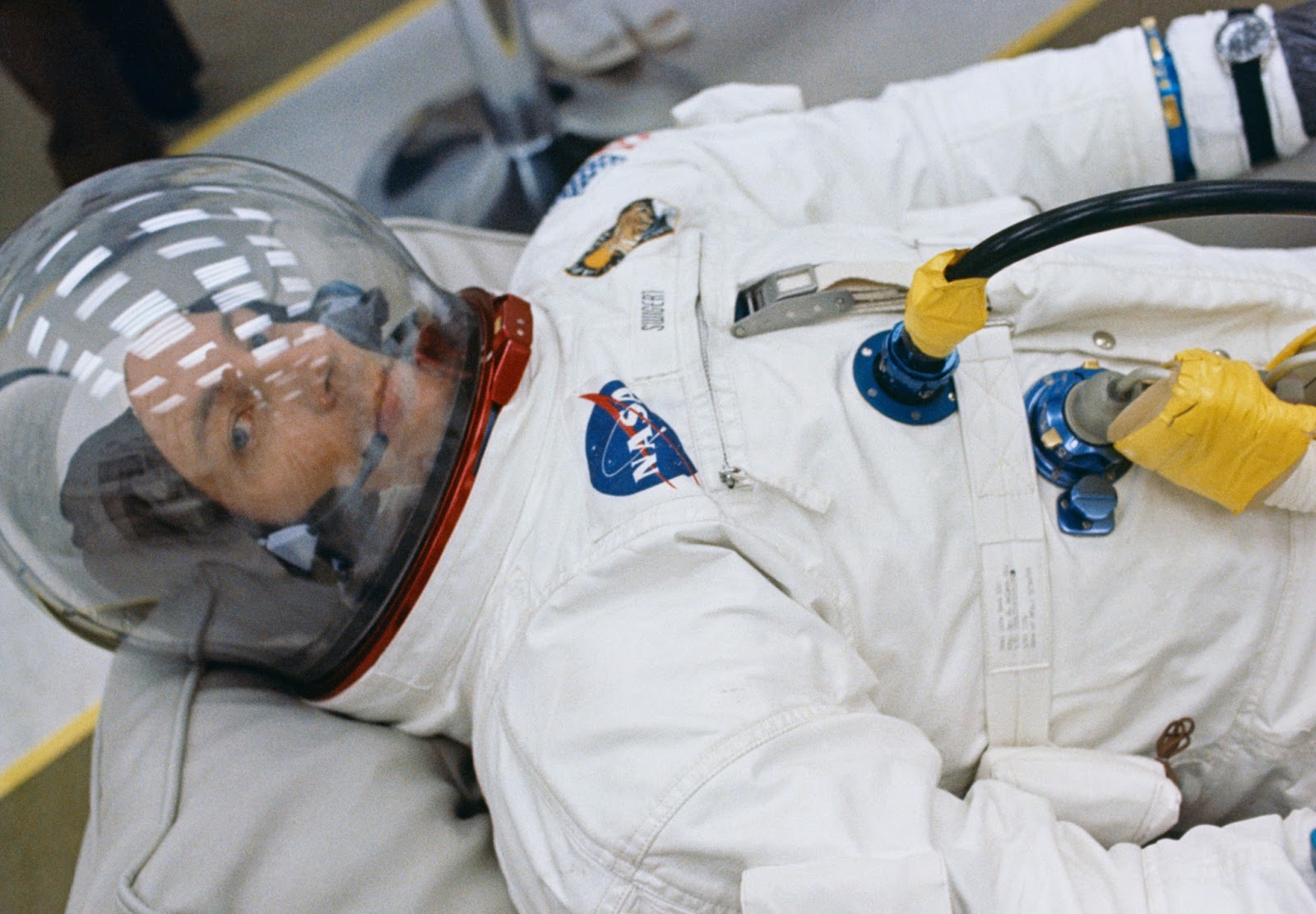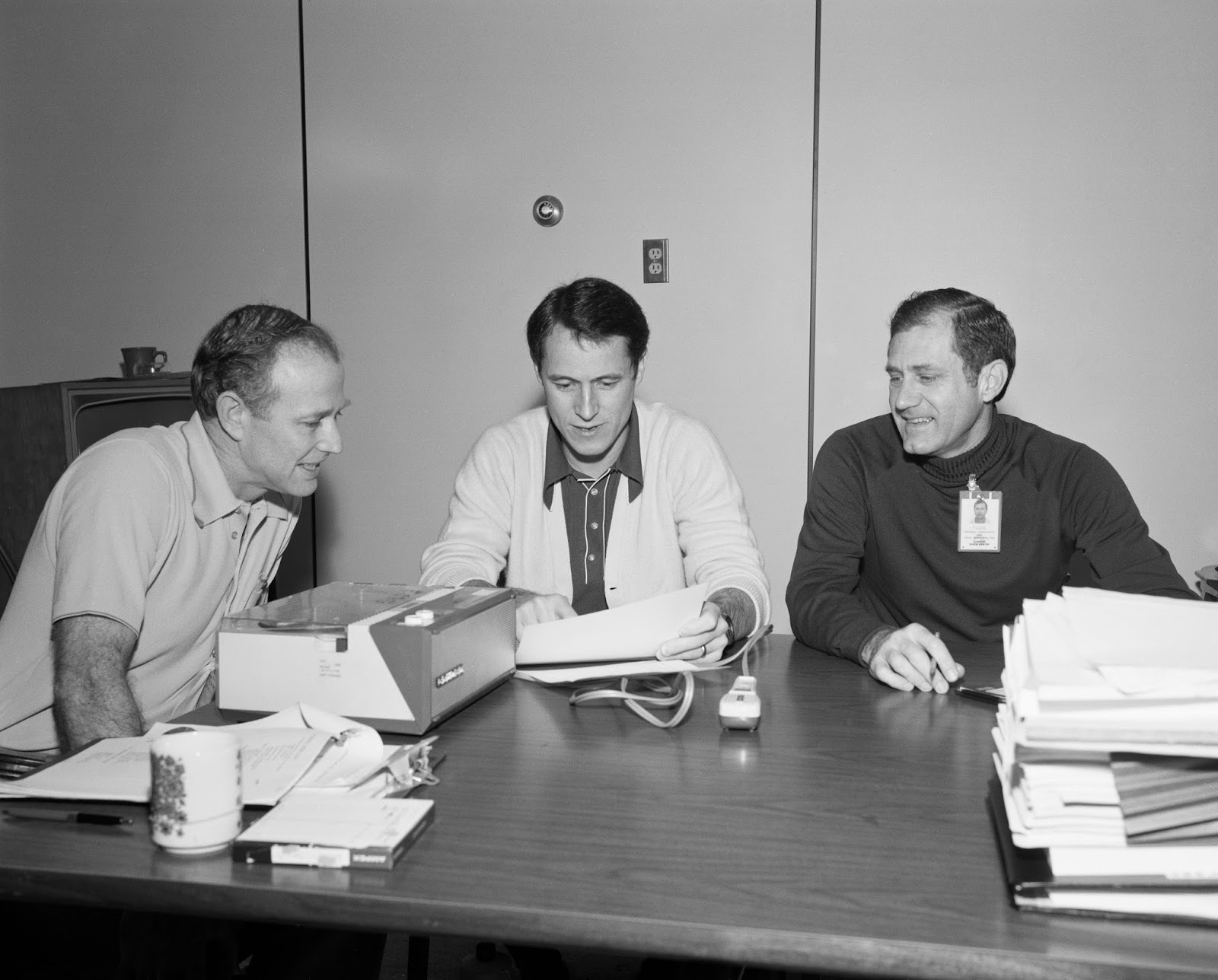Everybody loves a good story. At the dinner tables, by the firesides, by the swimming pools, people always huddle by the person with the best, most far out, outrageous story – replete with dramatic interjections, pseudo-shouts, and all the bells and whistles. The Internet has become like a “dinner table” for the masses. Frequently, you’ll find hordes – sometimes thousands – of people virtually “huddling” by a story almost too outrageous, teased and polished to the point of legend, to be believed. And often, they are too outrageous to hold water. But people cling to these tall tales like life raftsfrom a sinking ship.
In the canon of spaceflight history, there are a few notable cases in point. Several visible American spaceflight myths include the recovery and professional conduct of Gus Grissom after his successful Liberty Bell 7 flight, Jack Swigert’s readiness and professional conduct before and during Apollo 13’s ill-fated mission, and the Skylab 4 “mutiny” that never actually happened. There are plenty of books and online articles that have, in my estimation, provided more than enough evidence to put the fallacies surrounding these historic events to rest. The NASA mission reports, in fact, do more than enough to put any conjecture to rest, yet still many “opposing” pieces, YouTube videos, popular movies, and poorly researched books claim otherwise.
The Soviet space program, too, is not immune to its share of legends, including the complicated, grisly, and sad tale of the “lost cosmonauts.” A recent piece by a website called The Vintage News supposes that a female cosmonaut (pre-Valentina Tereshkova) “made recordings in space,” then horrifically, her “radio fell silent,” and nothing was heard from her again. She is presumed to have drifted along in space before burning up during a fiery reentry. This piece alleges that more “lost cosmonauts” existed before Gagarin’s successful flight, and the Soviets denied (and still deny) these flights were ever made.
This seems like a reasonable story, to be honest. The Soviet space program was cloaked in so much secrecy in its earlier days, it might seem feasible to some that Korolev and company would’ve “covered up” one or more fatal failures. In fact, some horrific accidents in Soviet rocketry were not discovered in-depth by Western sources until decades after the events took place. However, detailed, complex work including original research by many space experts, including (but not limited to) Sven Grahn, Phil Clark, Anatoly Zak, and James Oberg have pretty much demolished the claims of the Soviets sending up cosmonauts prior to Gagarin. Yet the myth persists, and as of today still propagates itself all over Facebook. Yet another Soviet-era myth involves the first Soyuz flight, which ended in a fiery, uncontrollable blaze as its cosmonaut pilot, Vladimir Komarov, allegedly cursed and cried at ground controllers. This, too, is an oft-repeated, grisly tale, sometimes reported by reputable news websites.
While I’ve been a lifelong space enthusiast, I’ve only been active as a spaceflight writer/blogger over the last decade, and I’m aware I have a lot of gaps in my own level of knowledge. For a shorter period (seven years), I’ve functioned as the chief “lion tamer” over at the occasional Facebook circus known as Space Hipsters. Throughout this time, one thing – despite the transitional era from Shuttle to newer programs, including commercial programs – has remained constant: the same spaceflight myths and legends, however untrue, however debunked by space historians in the past and at present time, keep popping up like the heads of Hydra. Once you chop one off, one or more pop up again.
People, especially online, eat up the myths like candy, and discard the factual accounts like trash. Why? I’ve often wondered this, especially because the truths surrounding the actual missions are often more illuminating, dramatic, and sometimes tell a richer story than the legends. For example, Grissom’s mission, previously flawless, was dogged only by a prematurely blown hatch, not actuated by him. However, this aberration was corrected, not to occur again during the Mercury program. In addition, Swigert was probably best suited to troubleshoot the Command and Service Module’s issues, was very well-trained and competent, and most of all, got along fine with Lunar Module Pilot
Fred Haise. These myths may have persisted in part because Grissom and Swigert are both long dead, and cannot defend themselves.
However, the “Skylab 4 mutiny” story persisted throughout the lives of its astronauts, and still mostly does (William Pogue died in 2014, forty years post-mission). Skylab 4 did not go on “strike,” the three astronauts accidentally cut off their communications at the same time, without any ill intentions. But nobody seems to want to hear or read about the lessons learned from these missions that improved future spaceflight endeavors; they seem most attached to the specter of “high drama.”
Why Do We Festishize Spaceflight Myths?
I’ve tried to limit the allure of myths (and “myth-takes”) to a few categories:
- People are inherently narcissistic, and like to make historic events about themselves: Many like to claim involvement in historic events even though they had absolutely no involvement in them. I can’t count how many times I have posted up my refutation (boosted by facts) that there was no mutiny on Skylab, and a person writes back, “I know there was, I was THERE.” Huh? So you were aboard Skylab at the time? Maybe the commenter(s) read a newspaper article during that period alleging a “mutiny” or falling-out of sorts, but that hardly means he or she was actually “there.” Many news stories – spaceflight or not – have been written with no background information, or interviews from involved subjects.
- People are attracted to conspiracy theories: This is kind of a broad and easy answer. Often conspiracies about momentous events being “hidden from the public” hold a lot of intrigue. Even so, many spaceflight events happened in full view of the public (for example, the Saturn V lunar launches were pretty difficult to hide), and still generated plenty of conspiracy theories (i.e. “The Moon landings were faked”). Also, stories about death and/or wrongdoing, however untrue or unlikely, are very appealing to some on an emotional level.
- The “telephone game” effect, worsened by the advent of clickbait: The ease of placing content on the Internet makes these stories hard to source. Almost anyone can call themselves a “blogger” and/or an “expert,” and put out content on a website. However, making everybody an “expert” makes no one an expert. Professionalism and expertise in any field takes a very long time to hone and develop. In addition, inaccurate information can be quickly disseminated on the Internet, making it ubiquitous – perhaps more “popular” than the true story, and the facts. Some (not all, I want to add) science and/or space websites champion page views over accuracy. A long, well-researched, beautifully photographed news or history piece might get less hits than, say, something that runs 250 words in length, and gives the reader the barest information about a historic event. But the shorter piece was easier to put together, is easier for readers to comprehend at a more basic level, and the “writer” probably didn’t get paid much, if at all, for it. Which leads to…
- Scientific illiteracy and anti-intellectualism: Large numbers of people seem more apt to run with a short “bite” of information, accurate or not, versus actually reading a well-researched book on the topic. Taking the time to learn a topic is more difficult than just reading a breezy headline on an iPhone.
- Mistrust of government and/or agencies that control spaceflight:If you look at the comments on NASA’s Facebook page on any given day, you will see comments accusing the agency of faking Moon landings, covering up the existence of aliens/UFOs, faking the recent SpaceX Falcon Heavy triumph (even though SpaceX is a private company), and more increasingly shrill accusations. It’s clear a large segment of the public does not trust that a government agency would give them the truth about where their tax dollars are going, even though NASA has been for a large part open with the public about their activities.
Where Do We Go From Here?
People forget these myths can target still-living, real people. One Apollo-era astronaut related to me his utter horror in searching his name on Google, and finding that the first story linked to him involves an oft-repeated and damaging myth. Sounds like fun, huh? Yet the stories concerning his “myth” overpower the stories debunking his myth in a Google search. It’s time to dig deeper.
Perhaps the only way we can be vigilant about separating myths from truth is to employ critical thinking skills. If it seems to insane to be true, is it? Feel free to look for other sources. If it doesn’t make sense, formulate questions and feel free to ask them. A quote attributed to Arist
otle reads, “It is the mark of an educated mind to be able to entertain a thought without accepting it.” Feel free to not necessarily accept a popular line of thinking, and who knows, you might become an “expert” in the process.
Emily Carney is a writer, space enthusiast, and creator of the This Space Available space blog, published since 2010. In January 2019, Emily’s This Space Available blog was incorporated into the National Space Society’s blog. The content of Emily’s blog can be accessed via the This Space Available blog category.
Note: The views expressed in This Space Available are those of the author and should not be considered as representing the positions or views of the National Space Society.




















